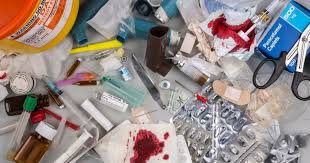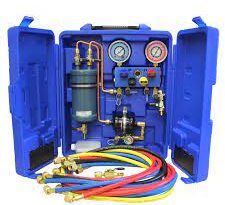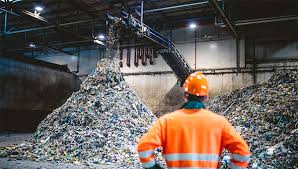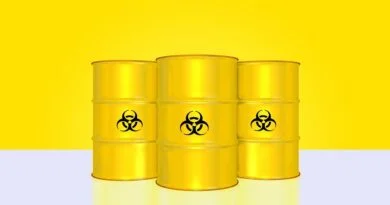Different Types of Hospital Wastes
Normally, waste is mostly categorized based on the risk it holds. Different authors, scientists, observers, and regulatory bodies have classified medical waste in various ways and from different perspectives.
The classification is (i) based on their form or state, that is, solid or liquid form, (ii) based on their sources, and (iii) some focused on their potential risk to the public.
Types of Hospital Waste
Normally, waste is mostly categorized based on the risk it holds. Different authors, scientists, observers, and regulatory bodies have classified medical waste in various ways and from different perspectives.
The classification is (i) based on their form or state, that is, solid or liquid form, (ii) based on their sources, and (iii) some focused on their potential risk to the public.
The Ministry of Environment and Forests in India and other regulatory bodies have also described 10 categories of biomedical waste. These categories cover all the types of waste that are generated in all medical facilities including hospitals, which are known to generate the highest amount of waste.
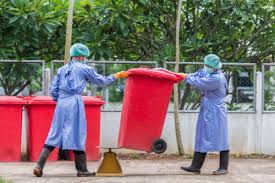
All these classifications are mostly based on what is usually obtained in each country or geographical zone. However, the definitions and classifications of the regulatory authorities of how a particular waste should be classified or handled, treated and disposed are usually adopted because of the serious ramifications involved.
All categories and classifications of medical waste can be seen to generally fall into two main broad types: risk and non-risk waste.
Risk Wastes and Non-Risk Wastes
1. Risk Wastes
Risk waste consists of several aspects of hospital and other biomedical wastes considered dangerous to the public because of the presence of certain components with the intrinsic ability of spreading infections or causing harm to the community.
Read Also: Recommended Methods of Waste Disposal
Risk waste may be sub-divided into many categories, but it is important to note that each category is unique in its components, sources, and the potential hazard it may cause. We shall be discussing below the subdivisions of risk waste.
1a. Infectious Waste
Infectious waste is a biomedical waste that has been previously contaminated with any type of pathogen with sufficient virulence capable of infecting a susceptible host thereby resulting in an infectious disease.
This includes bacteria, virus, parasite, or fungi that are capable of causing infection or spread of infectious diseases in the community. Some believe that infectious waste could just be classified as any waste with the presence of micro-organisms.
However, this approach needs careful consideration because certain factors are necessary for waste to be actually termed infectious. It is important for waste to harbor pathogenic micro-organisms with virulence capabilities and in sufficient amount of dosage required for infection in a susceptible host. Such waste can be termed infectious.
1b. Pathological Waste
This includes anatomical waste from human and animals usually generated from hospitals and veterinary hospitals.
Examples include blood, body parts such as amputated legs or arms, placenta, and tissues. They are potentially dangerous with a high risk of disease and infection in a susceptible individual who has direct contact with them.
1c. Microbiological/ Clinical Waste
This is closely related to pathological waste in terms of high risk but the contents are quite different from pathological waste. It is usually generated from laboratories during the course of experiments and clinical trials.
Examples include human and animal cell cultures from clinical experiments, microorganisms, blood collection tubes, body fluid, drainage bags, vials, used culture dishes, and other materials that were previously in contact with infectious agents.
1d. Sharps
Sharps consist of both used and unused sharp objects such as hypodermic needles, syringes, scalpels, broken ampoules, and glassware.
They are considered highly dangerous because they are not only capable of causing punctures and cuts on the skin but they also harbor dangerous pathogenic bacteria, which may be introduced into the body via wounds or punctures.
Sharps are usually generated in the operation theatre where surgical activities are carried out. Other areas where they are generated include all wards and laboratories.
1e. Pharmaceutical Waste
Under normal circumstances, pharmaceutical waste constitutes a very low percentage (3%) of medical waste. However, the unsafe disposal of such items may pose a significant threat.
Pharmaceutical waste is generated by various means but not limited to the following: chemicals, substandard and expired drugs, preparations of drugs added to an intra-venous solution, pharmaceutical products such as drugs.
Read Also: Waste Management Control Methods
It is very important to note that pharmaceutical waste does not include empty glass ampoules, drugs, and other metabolic products excreted by patient undergoing therapy, empty pills bottles or strip packages from where the drug/capsules have been previously removed.
1f. Chemical Waste
Chemical waste materials include those that are generated during the production of biological preparations such as disinfectants and insecticides, in medical, dental, and veterinary laboratories.
1g. Radioactive Waste
These are solid, liquid, or gaseous forms of waste generated from the medical or research use of radiology, radionuclide (e.g., during radioimmunoassay), and other radiological procedures which are capable of emission of radiation at above the level set by regulatory authorities as exempt.
Examples are found in nuclear medicine treatments, cancer related therapies, and medical devices that use radioactive isotopes.
1h. Cytotoxic and Genotoxic Wastes
These include unused cytotoxic drugs, solid materials such as sharp objects, tissues, IV bags, and any other items which may have come into contact with a cytotoxic drug and/or carcinogenic matter.
2. Non-Risk Wastes
Non-risk waste is general waste that is generated within hospitals and they are similar to municipal waste from a normal home. They are considered non- infectious and non-hazardous and are generated by almost everyone in the hospital.
Non-risk waste includes office waste, food waste, that is, leftover food, fruits, vegetables, etc., aerosols, as well as non-infectious, non- anatomical waste from patient care areas (i.e., disposable diapers, pads, papers, cartons, gloves, trays, catheters/bags (empty), and casts).
In conclusion, risk wastes consists of several aspects of hospital and other biomedical wastes considered dangerous to the public because of the presence of certain components with the intrinsic ability of spreading infections or causing harm to the community.
Read Also: Recommended Methods of Waste Disposal
Risk waste may be sub-divided into many categories, but it is important to note that each category is unique in its components, sources, and the potential hazard it may cause.
While Non-risk wastes is general waste that is generated within hospitals and they are similar to municipal waste from a normal home.
They are considered non-infectious and nonhazardous and are generated by almost everyone in the hospital.
Non-risk waste includes office waste, food waste, that is, leftover food, fruits, vegetables, etc., aerosols, as well as noninfectious, non-anatomical waste from patient care areas (i.e., disposable diapers, pads, papers, cartons, gloves, trays, catheters/bags (empty), and casts).
Different authors, scientists, observers, and regulatory bodies have classified medical waste in various ways and from different perspectives. The classification is (i) based on their form or state, that is, solid or liquid form, (ii) based on their sources, and (iii) some focused on their potential risk to the public.
The Ministry of Environment and Forests in India and other regulatory bodies have also described 10 categories of biomedical waste.
